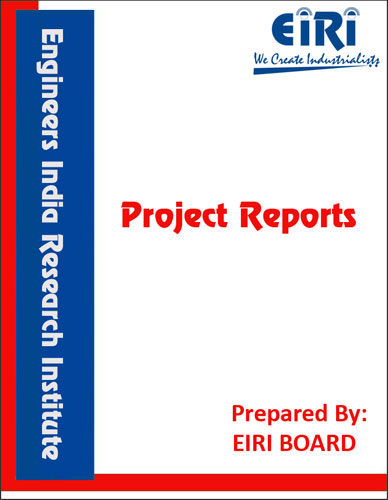MICA PEARL PIGMENT
The project report includes Present Market Position and Expected Future Demand, Market Size, Statistics, Trends, SWOT Analysis and Forecasts. Report provides a comprehensive analysis from industry covering detailed reporting and evaluates the position of the industry by providing insights to the SWOT analysis of the industry.
We can prepare PROJECT REPORT as per your INVESTMENT PLAN for BANK LOAN REQUIREMENT and INDUSTRY ANALYSIS. All reports are prepared by highly qualified consultants and verified by a panel of experts.
Have Query? Click Here to Chat
Industry Expert is Online, Chat with him for more detail.

Pearl pigments are special kind of pigments belonging to the group of phosphorescent and fluorescent pigments. Pearl pigments are also known as pearlescent pigments. Pearl pigments have a transparent appearance because of smooth and highly reflective planes. These pigments have a pearly shine when coated with a layer of metallic oxide, in presence of mica. Hence the name ‘pearl’ pigments. Pearl pigments coating provide a vibrant visual impact and enhances special effects. Generally titanium dioxide coating is used in present of fine mica flake for the manufacturing of pearl pigment coatings. Carbon black powder is added to enhance the shinning effect of pearl pigments.
Pearl pigments are bad conductor of heat and electricity; can withstand temperature as high as 800 degree C. Pearlescent pigments has high acid and alkali resistance capacity. These properties make them a preferable choice for coating pigments; they are widely used for automobile coating. The pearly gloss of the pearl pigments provides a new color quality to the automobiles. They are extensively used in the manufacture of luxurious cars and other sport vehicles. The artificial luster of the pearl pigments also finds application in the toy making industry. Pearl pigments are mixed with other monochromatic coating mixtures to prepare pearl light coating. Pearl light coating is used in the building and construction industry. Pearl light coatings are also being used to manufacture semi-transparent and transparent plastic materials. Printing industry is also a key end user industry of pearlescent pigments. The different colored and lustrous inks used for printing purposes use pearl pigments. Pearl pigments are safe and non toxic for edible purposes so they are widely used for food packaging.
Pearl pigment was innovated in the later part of the twentieth century. In the initial stages it was extracted from fish scales. However with the development of technology, titanium dioxide and mica flakes replaced fish scales in the manufacturing process of pearl pigments. The largest consumer of pearl pigments is the paint and coating industry. The paint and coating industry accounts for more than half of the market share of pearl pigments by volume. The printing industry is the next largest consumer of pearl pigments. Although North America is the largest market for pearlescent pigments, Asia Pacific is the fastest growing market for pearl pigments.
Increase in the automobile manufacturing activities in countries such as Japan, South Korean, China and India has fuelled up the demand for pearl pigments in the Asia Pacific region. The demand for this pigment decreased drastically in Europe due to the economic slowdown in most of the European countries. However the economic condition is improving in Europe so the demand for pearl pigments can be estimated to rise. Germany and Italy are the largest pearl pigment markets in Europe owing to their large automobile market. Pearl pigments are more preferred over other pigments such as chromium and cadmium containing pigments. Pigments containing heavy metals such as chromium, cadmium, lead and mercury are highly toxic and hazardous. The U.S. Environmental Protection Agency banned the use of heavy metal containing pigments as they are harmful to human and the environment. This elevated the demand for pearl pigments, as they are non-toxic and eco-friendly. The popularity of green building in the world has further increased the usage of pearl pigments for manufacturing of paints and coatings for buildings. Some of the key manufacturers of pearl pigments are Millennium Chemicals, Inc., BASF SE, Heubach GmbH, L’Arca Srl and The Dow Chemical Company.
INTRODUCTION
TITANIUM DIOXIDE PEARLS
B.I.S. SPECIFICATION
DETERMINATION OF PARTICLE SHAPE
PROPERTIES AND CHARACTERISTICS
MARKET SURVEY
IMPORT DATA OF SP PEARL PIGMENT
GLOBAL MARKET OF PEARLESCENT PIGMENT
USES & APPLICATION
GUIDELINES FOR USING PEARL PIGMENTS
RAW MATERIALS
MANUFACTURING PROCESS
FORMULATION OF MICA PEARL PIGMENT
FORMULATION
PROCESS FLOW DIAGRAM
DETAILED PROCESS OF MICA BASED PEARLESCENT PIGMENT
PRINCIPLES OF PLANT LAYOUT
PLANT LOCATION FACTORS
EXPLANATION OF TERMS USED IN THE PROJECT
PROJECT IMPLEMENTATION SCHEDULES
SUPPLIERS OF RAW MATERIALS
SUPPLIERS OF PLANT & MACHINERY
ADDRESSES OF CONSULTANTS FOR MICA PEARL PIGMENT
APPENDIX – A :
1. COST OF PLANT ECONOMICS
2. LAND & BUILDING
3. PLANT AND MACHINERY
4. FIXED CAPITAL INVESTMENT
5. RAW MATERIAL
6. SALARY AND WAGES
7. UTILITIES AND OVERHEADS
8. TOTAL WORKING CAPITAL
9. COST OF PRODUCTION
10. PROFITABILITY ANALYSIS
11. BREAK EVEN POINT
12. RESOURCES OF FINANCE
13. INTEREST CHART
14. DEPRECIATION CHART
15. CASH FLOW STATEMENT



